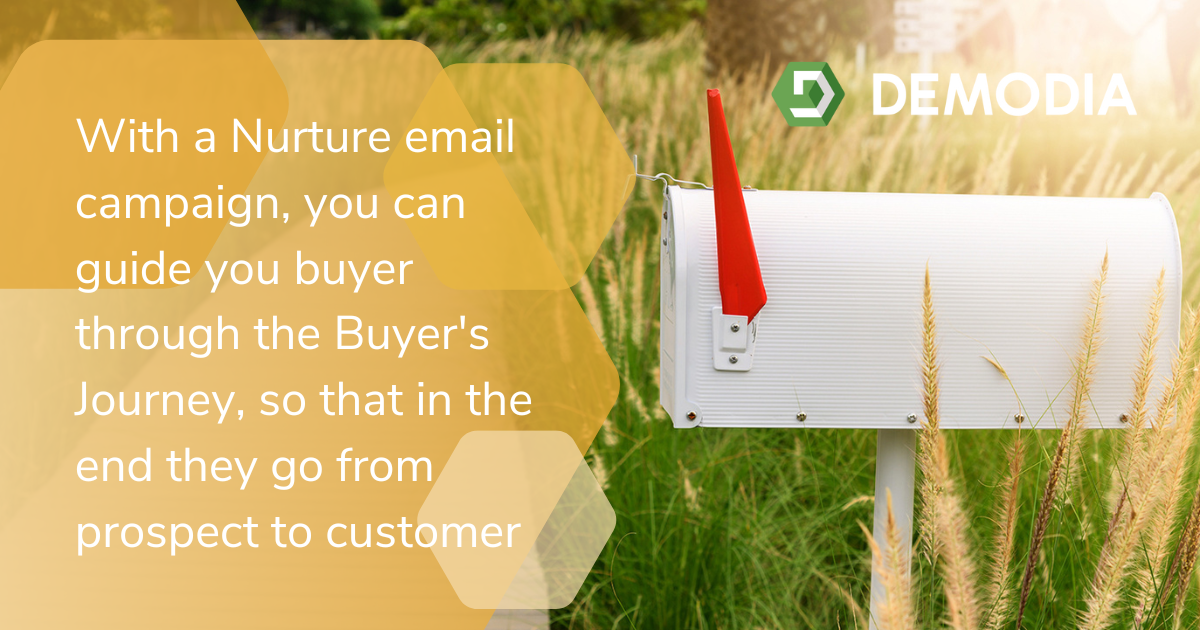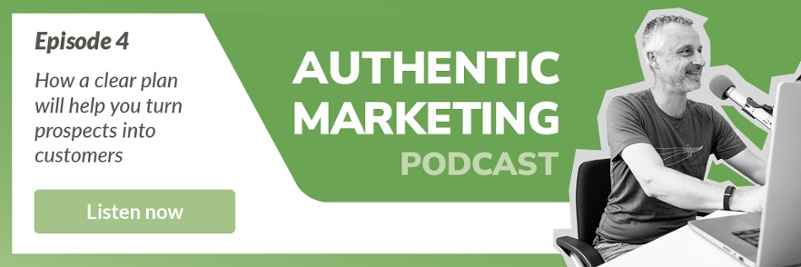The simple guide to a Nurture email campaign with storytelling

You've collected a potential customer's email address on your website, which means they're ready to receive more information about your offer. Now it's about nurturing the relationship with him. With a Nurture email campaign, you can guide you buyer through the Buyer's Journey, so that in the end they go from prospect to customer. For this to happen, your content must meet the following criteria:
- Consistency: choose the frequency and timing of the send based on the information you have about your target audience. In the absence of insights, we recommend sending out emails at 1-2 week intervals and not on a Monday, as many people's inboxes overflow on this day.
- Added value: We have limited working time and cannot process all the facts. To survive in this shortage situation, your Nuture email campaign must deliver extremely relevant content that clearly adds value to the prospect.
- Structure: The emails need to build on each other so that with each email, the prospect feels like an important piece of the puzzle is being added to their overall picture.
This is where storytelling comes into play. The last two criteria can be easily met with our storytelling structure. The first criterion - frequency - we solve with automation, because we at Demodia, are certified partners of HubSpot, Salesforce and Walnut we know how to perfectly master the interface between storytelling and digitalisation.
We have years of experience with storytelling and recommend incorporating the following storytelling elements into your Nurture email campaign:
The problem and its solution
The mentor and his credibility
The Call To Action and a short cliffhanger
The structure of a Storytelling Nurture email campaign
The Nurture email campaign starts with the lead generator. So, for example, a PDF with valuable information that the prospect downloads and gives their email address in return. Your email sequence therefore logically begins with the email in which you send your lead generator.
1. Email to send the lead generator
Keep this email short and to the point. A simple: "Thank you for your interest in [lead generator]." will suffice. After the friendly goodbye, we recommend a PS in the follow-up. There you should place a link that leads to a page on your website that explains what problem your product solves. Add to this a reference to the next e-mail - as a cliffhanger, so to speak - which makes you curious about your next communication.
2. The problem and its solution
Now the second important principle of storytelling for marketing comes into play: the customer is the hero of the story and the brand is the guide who solves his problem.
You can read more about the function of customers and mentors in storytelling for brands in this blog post.
For your second email in the Nuture email campaign, the same applies: short, concise and clear. We recommend an email with three paragraphs. In the first two, you explain the problem you are solving.
In the third paragraph, you present the solution.
And in the PS, you give your prospects the opportunity to buy your product directly.
3. Quote satisfied customers
For a customer to be convinced that you have the solution to their problem, you need credibility and that is what the third email of your campaign offers. Quote satisfied customers and describe their successes after they solved their problem with the help of your brand.
In the first paragraph, describe your authority in a short paragraph with a few numbers or awards, then let your satisfied customers have their say in the next paragraphs.
In the PS, don't forget the call-to-action and the cliffhanger.
4. Breaking down barriers in the mind
The prospect knows at this point what problem you are solving and that you have been able to satisfy customers in the past.
Now it's time to break down any barriers the prospect may have in their mind. As a digital agency, we are often confronted with the assumption that storytelling and automation don't go together. In our third email, we argue with numbers, case studies and success stories that storytelling and automation add up to more than the sum of the two individual parts.
In this email, we don't recommend a fixed number of paragraphs. The length depends on how many good arguments there are to refute the prospect's assumption.
And as with the previous emails, don't forget the PS with the Call To Action and the cliffhanger.
5. From prospect to buyer
In this email, because it is the most important of all, we recommend using several elements from the storytelling toolbox.
Describe again the problem you are solving. Quote a satisfied customer and show the three steps your prospect needs to take to do business with you. We recommend offering a limited time discount or other benefit in this email so that the prospect is even more motivated to work with you.
In this email, the Call To Action is not hidden in the PS, but placed prominently in the email.
The offer should be repeated again in the PS. Finally, there is another Call To Action. And voilà, you have already converted a prospect into a customer.
This system works. We know that, but without intelligent automation, an email campaign eats up a lot of resources. We only need 30 minutes of your time to understand how we can increase the efficiency of your email marketing. Make an appointment here and we look forward to hearing about your campaign.
PS: Did you know that the opt-out rate for well-designed Nuture campaigns is only 1 percent?
